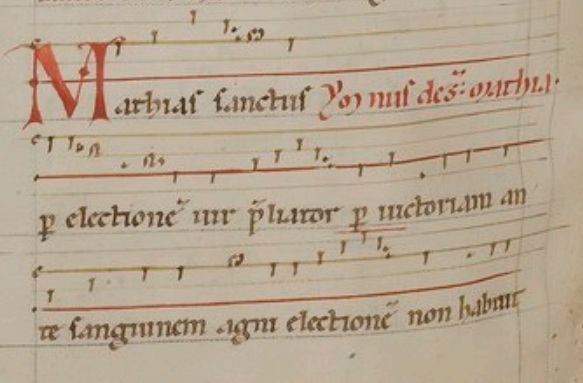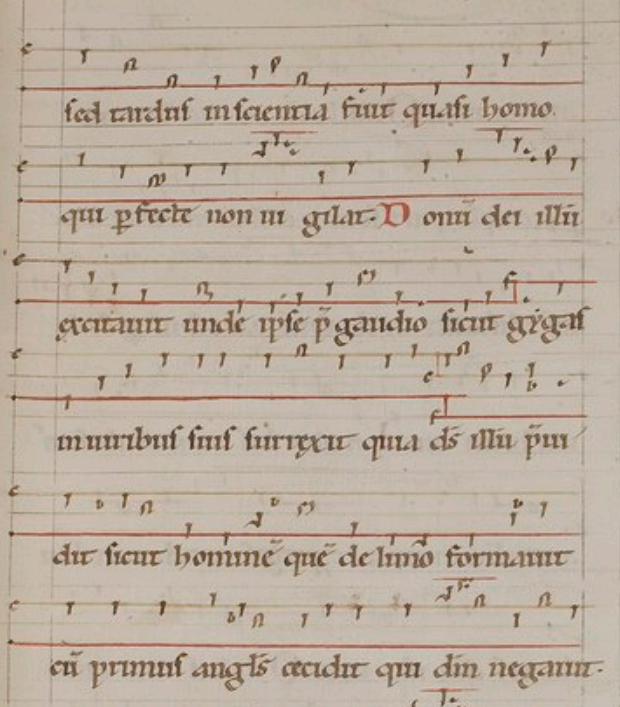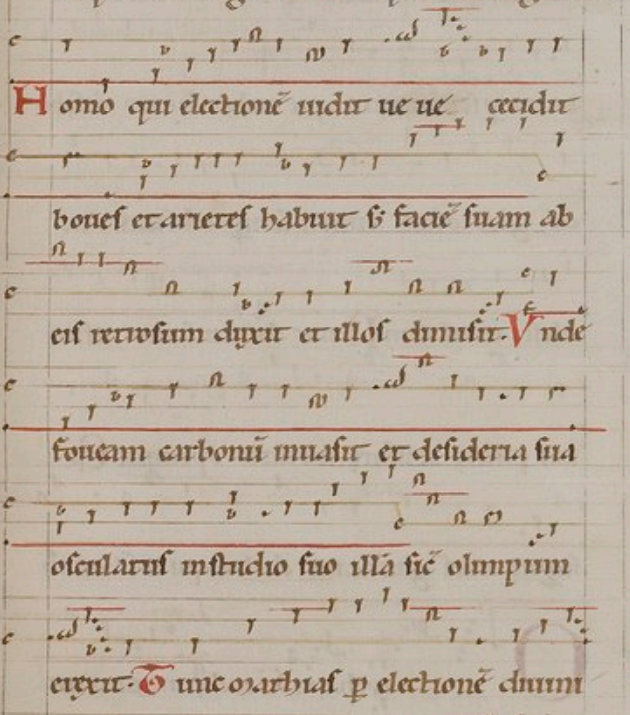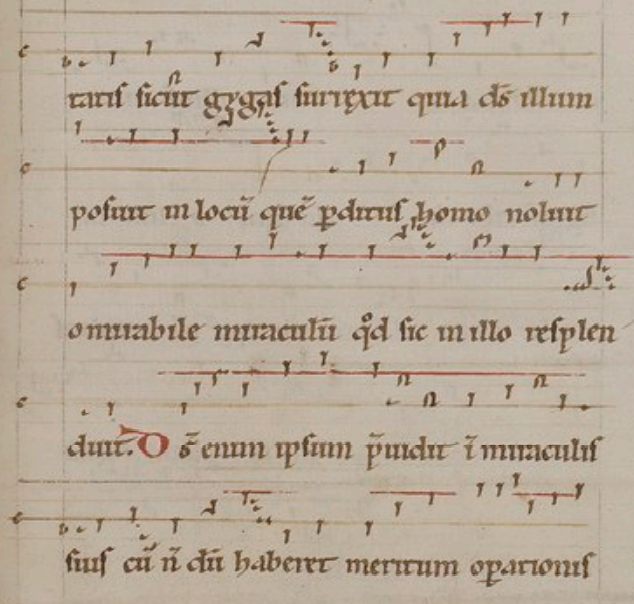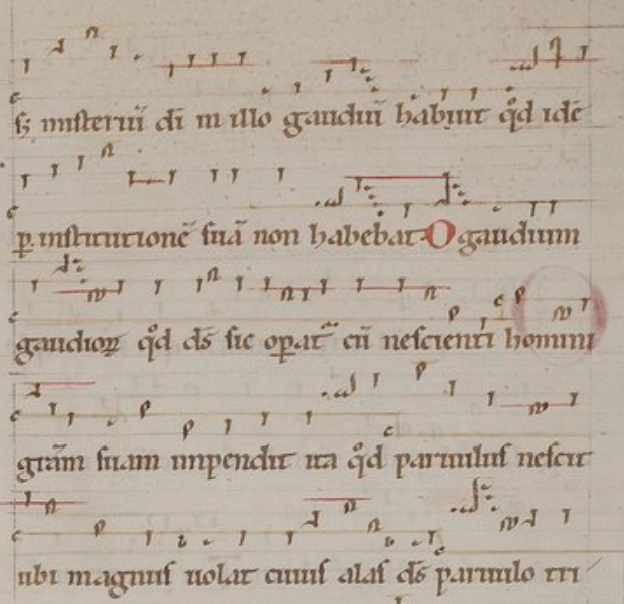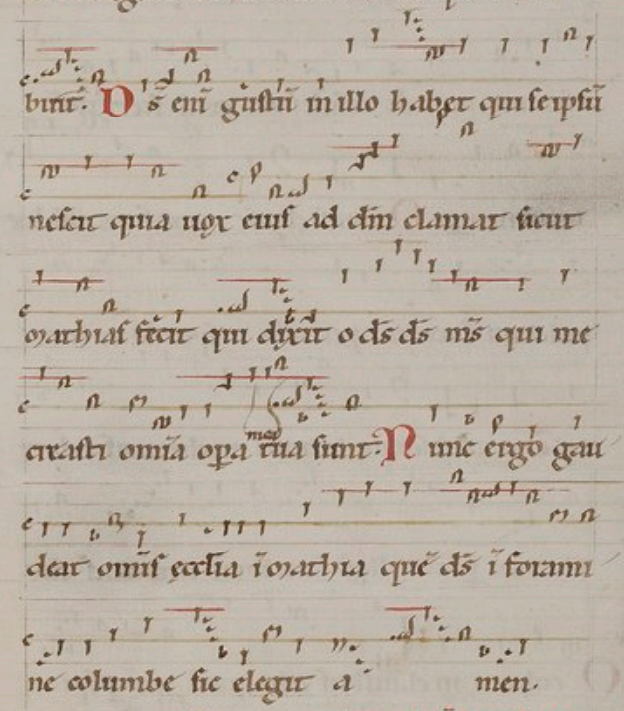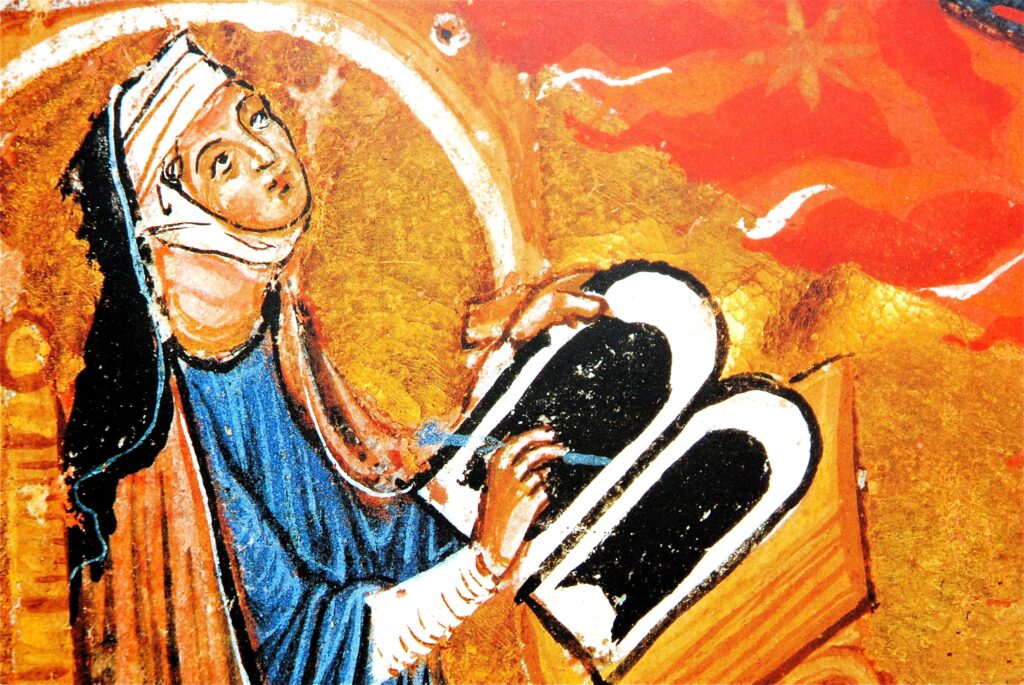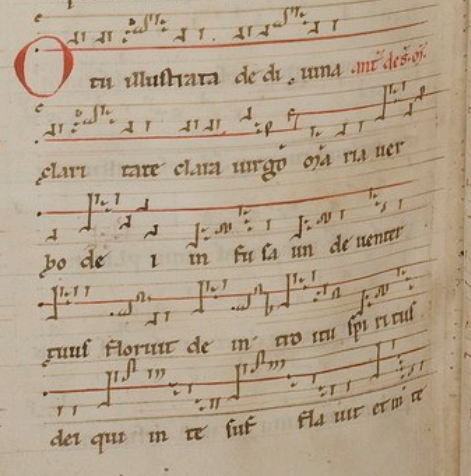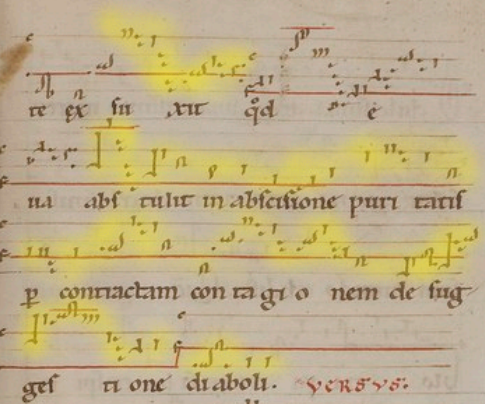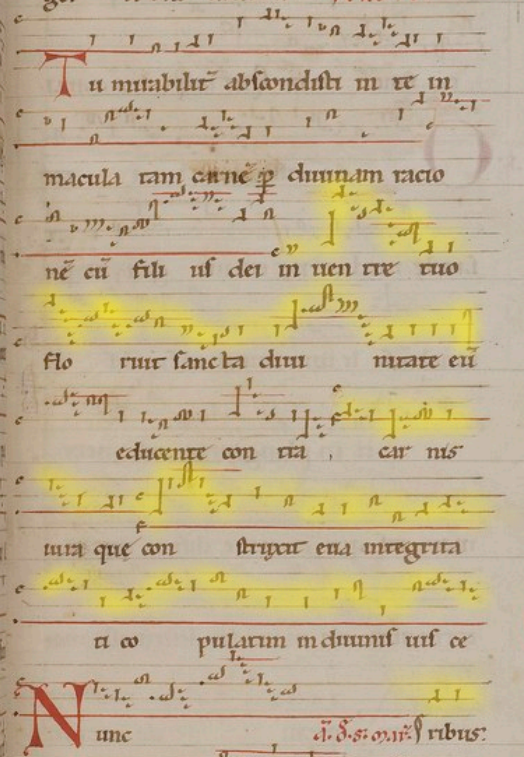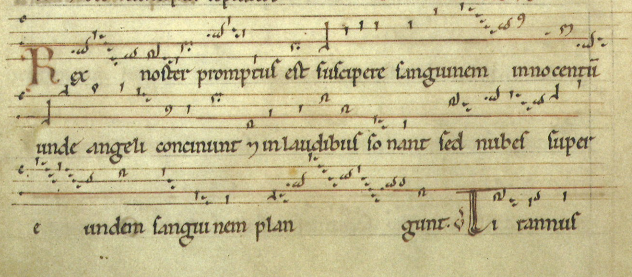Between the drilling and the banging of next door’s renovation project and the clicks and buzzes of my imperfect recording set-up, I post a hymn for Saint Matthias. Until 1969, the feast day of Saint Matthias was today – February 24th (it was then moved to May 14th so as not to fall within Lent).
Saint Matthias, like many of the saints honoured by Hildegard, has a connection to Trier: some of his remains reside there, at the Abbey of Saint Matthias.
mathias sanctus per electionem
#hildegardvonbingen #chant #facsimile
Mathias, holy by selection, a man, champion in victory, who was not elected before the blood of the lamb, he was tardy in his knowledge – like a man not quite awake. The gift of god excited him, so that he rose up for joy, like a giant in his strength, and god foresaw it, as he had foreseen how man, formed of clay, who denied god, fell – like the first angel. Man, who saw choice, alas, alas, he fell, he turned his face away from the oxen and rams that he had and abandoned them. And so he entered the pit of coal and kissing his desires in his ardour raised them up like olympians. Then mathias, divinely chosen, rose up like a giant, because god put him in the place that fallen man had rejected, o wonderful miracle, that shone in him. And so, god foresaw him in his miracles, although he had not yet the merit of works, but the mystery of god had joy in him, joy, that at its conception, it did not have. O joy of joys that god works in this way, when unknowing man spends his grace, and the child does not know where the adult flies, the child is carried by the wings of god. And so, god loves he who knows him not, because his voice calls out for god, just as mathias did, saying: o god, o my god, you who created me, all my works are yours. And so all the church has joy in mathias, who was chosen by god in the dove’s nest. Amen.

